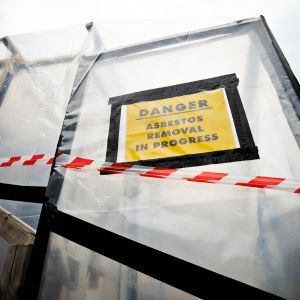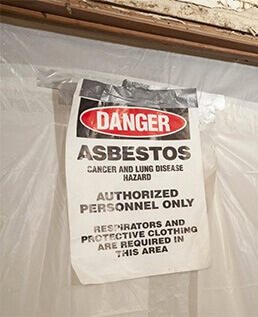What to Do If You Think You've Been Exposed to Asbestos
Posted in Asbestos Removal, on January 15, 2024
Exposure to asbestos can be a scary thought, but for the most part the risk can be mitigated with a careful approach to asbestos removal. Leading restoration companies in Toronto, Montreal, Ottawa, and other major Canadian cities like Canada’s Restoration Services can provide property owners with the guidance and services they need to avoid contact with the harmful mineral. Our certified and trusted asbestos abatement specialists have meticulous processes that protect you, your property, and your loved ones.
To learn more about how to prevent and address asbestos exposure, read on.
Signs You’ve Been Exposed to Asbestos
 The signs of asbestos exposure might not be immediately visible or noticeable, which can make it difficult to understand how to respond appropriately. Asbestos, when airborne, divides rapidly into small microscopic fibers. These tiny fragments of asbestos can be difficult to see. As the amount of asbestos increases in the environment, you may notice difficult breathing and sharp chest pain. If you are experiencing these signs, vacate the premises immediately, and contact Canada’s Restoration Services, a leading restoration company near you. In most cases, severe health issues won’t occur until after extended periods of exposure to the mineral. For the best chance, leave any suspicious materials alone and untouched, and contact Canada’s Restoration Services for asbestos removal.
The signs of asbestos exposure might not be immediately visible or noticeable, which can make it difficult to understand how to respond appropriately. Asbestos, when airborne, divides rapidly into small microscopic fibers. These tiny fragments of asbestos can be difficult to see. As the amount of asbestos increases in the environment, you may notice difficult breathing and sharp chest pain. If you are experiencing these signs, vacate the premises immediately, and contact Canada’s Restoration Services, a leading restoration company near you. In most cases, severe health issues won’t occur until after extended periods of exposure to the mineral. For the best chance, leave any suspicious materials alone and untouched, and contact Canada’s Restoration Services for asbestos removal.
Symptoms of asbestos-related illness persistent coughing, chest pain, respiratory issues, and shortness of breath are common indicators. Recognizing these symptoms and their potential link to asbestos exposure is essential for seeking timely medical attention.
Causes of Asbestos Exposure
When asbestos-containing materials are disturbed, they release tiny fibers into the air, leading which divide until they become small and rigid. At this point the fragments of the fibrous mineral can easily be inhaled or ingested. The most common causes of disturbance are renovations or demolitions in older buildings. These properties that operated within certain industries like construction and manufacturing historically used asbestos-containing materials, heightening the risk of exposure in these settings. Before you start construction projects in older properties, specifically those built in the mid-to-late 20th century, it’s important to schedule an asbestos inspection. When experts can identify potential asbestos risks, you can safely prevent exposure and keep yourself and others safer by strategically employing asbestos removal plans.
How to Avoid Exposure
Identification is the primary defense against exposure. Knowing which materials may contain asbestos, especially in older structures, is crucial. Professionals should assess and test these materials before any renovations or repairs commence to mitigate risks.
When suspicion arises, precautions are vital. Avoid disturbing potentially asbestos-laden materials and seek assistance from professionals skilled in handling and, if needed, removing such materials. Adequate personal protective equipment (PPE) and adherence to safety protocols are imperative for those working in high-risk industries.
Friable vs. Non-Friable Asbestos
Understanding the distinction between friable and non-friable asbestos aids in assessing the risk level. Friable asbestos, easily crumbled and airborne, poses a higher risk. Non-friable asbestos, found in materials like cement or vinyl, is safer if undisturbed and in good condition.
What to Do If Exposed
Immediate action is crucial upon suspicion of exposure. Seeking medical attention from healthcare professionals experienced in asbestos-related illnesses is paramount. Early detection and intervention can significantly impact the prognosis.
It's equally important to report exposure incidents to relevant authorities or employers, especially in workplace settings. Contacting certified asbestos removal or restoration companies for evaluation and safe removal of asbestos-containing materials is highly recommended.
Protect Yourself with Asbestos Abatement & Canada’s Restoration Services
Our team of leading experts can help you manage risks and streamline asbestos removal with decades of industry experience and training. It’s important to take asbestos seriously and guard your health with proper protective gear and risk management procedures. For more insight, contact our team directly.







